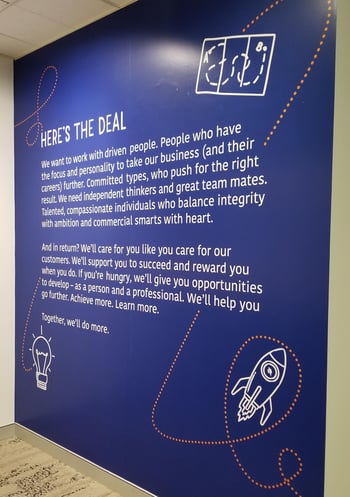2 min read
Earlier this month, Chloe Morley, Employee Experience Manager at Cover-More Group, joined Reward Gateway on a live webinar to discuss its proactive approach to developing a strong Employee Value Proposition. In the first two parts of this HR Heroes series, Chloe talked about:
- How Cover-More designed its engagement program to strengthen culture and enhance customer service, and
- The impact the program has had on company culture after launching an employee engagement platform at Cover-More.
In this post, Chloe walks through her top give tips for HR leaders who starting their employee engagement journey:
1. Understanding what you're trying to achieve will help you focus your effort.
Before you get into solution mode, really sit down and figure out what measure of success you're going to have, and how you're going to report on that to the business – they're the ones with the dollars!

2. Take the time to understand your audience.
Treat your employees as an audience whose attention you need to capture, rather than just parts of an organizational chart.
Don’t think of your content in the sense of what you need your people to know. Craft your content based on how you want your people to feel.
We took time to understand the different generations in our workforce, and ask what motivates them specifically, as well as what is stopping them from understanding the values and behaviors, and what would help them become more ready. And we looked at how we would design and market the program based on the audience’s needs.
3. Be really honest about any of the challenges you're facing as an organization that might affect the success of your program.
If you read the previous posts, you'll be aware that we knew that there was a perception with our people was that recognition had become quite tokenistic in our organization. We had to acknowledge that challenge upfront because that would have affected our long-term success.

4. Focus is on sustained success, not just short-term wins.
It is difficult, because it's really exciting designing a new program and launching your engagement program. But when we were talking about budget approvals, and the initial costs vs the long-term impact on employee engagement, the long-term approach is what will help you get the support you need.
As an example, if you're using an external agency for the design process, ask for templates so you have the ability to access and update things months later. Or if you’re looking for an employee engagement provider, make sure you partner with one who provides support and helps guide your engagement strategies.
One of the reasons we love working with Reward Gateway is that we have a great Client Success Manager who helps us make improvements to our program and keeps it relevant for our people.
5. Develop a marketing and communications plan
Make sure it's a communications plan that you can roll out not just at the launch of the program but each quarter and throughout the year. That way, employees get that frequent touch-points. Build editable templates to make it as easy as possible for others to take it on. Consider how you can communicate the program's success more broadly, not just in the platform you’re using or just in the moment you're recognizing, but externally too.
All in all, think about how you're accumulating those great stories about your employees, what are the opportunities are you setting yourself ahead of time to share them outside the organization and ride that wave of success. Those stories are what makes your culture, and that’s what people need to feel engaged and connected!
Love this? Read Part 1 of the Cover-More interview, where Chloe shares tips about how Cover-More improved its employee engagement and wellness scores by designed, launched and maintaining a program that employees love.
Want to find out how you can bring your company purpose, mission and values to life and enhance the customer experience through strategic reward and recognition? Talk to one of our consultants today.

 Joy Adan
Joy Adan




